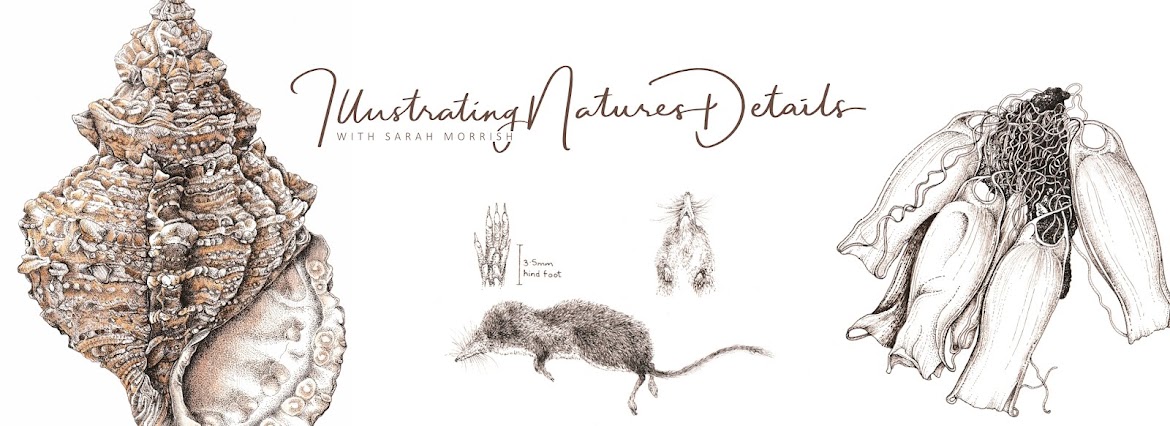Evident at the recent RHS London Botanical Art Show, was that several of the artists exhibiting had illustrated native species from their countries, rather than plants of a cultivated variety.
Three exhibitors illustrated British native plants, myself, Roger Reynolds and the Iceni Botanical Artists.
My exhibit 'Twigs & Buds in Winter - from Trees & Shrubs of Ancient Hedgerows'
Lower image courtesy of Solene Dequiret
Roger's Gold medal exhibit 'The Tip of the Branch' showed the beautiful detail of the growth stages of native woody species, and the Iceni Silver gilt medal exhibit was composed of numerous illustrations of 'Breckland Wildflowers - Heaths and Grasslands'.
Roger Reynolds with his exhibit 'The Tip of the Branch'
Images courtesy of Amber Halsall
The Iceni Botanical Artists Exhibit 'Breckland Wildflowers - Heaths and Grasslands'
As the first day of the show progressed, there was a pattern emerging and we soon realised that there was a real interest in native species. Roger and I were constantly busy on the first day especially, with many many people wanting to know more specific information about the plants we had illustrated in addition to the techniques we had used to illustrate them.
During one of the quieter moments of the show, you can see that Roger and I were still busy chatting to people around our exhibits (centre of picture).
Image courtesy of Katherine Tyrrell.
Even though the subjects of our exhibits were presented in a different way, both of them really raised the profile of native woody species and for me, the fragility of ancient hedgerows.
Chatting to one of my students visiting the show
Personally, I had numerous visitors unknown to me, come and introduce themselves and to tell me that they had been following my project online for the last year and now wanted to see the work for real. Other botanical artists were also grateful that I had been so open about the process I had gone through. This was extremely satisfying and is evidence of how different forms of social media can work positively to promote native species and of course botanical art, as well as help in promoting yourself as a professional botanical artist.
I would like to say a huge thank you to everyone that helped to spread the word, on Twitter, Facebook and followers of this blog. In particular the Botanical Society for the British Isles and The Ancient Tree Forum were very supportive on Twitter in the lead up to the show, as well as many others.
I had the opportunity to chat to the Show Manager about social media and he was very keen for artists to spread the word on social media platforms in the lead up to the botanical art show. There is nothing to say that you can't in the RHS documentation, and indeed they provide details of tags and links to use.
As an artist you do not necessarily want to reveal every single piece of the detail of your exhibit, but to reveal some information and perhaps images of parts of paintings, can pay dividends in the long run.
I will soon be writing another blogpost about the logistics of attending the RHS Botanical Art Show as an exhibitor - watch this space !















